Aquascaping, the art of designing and arranging aquatic plants, rocks, and driftwood in aquariums, has become popular among aquarium enthusiasts.
One plant that has captured the attention of aquascapes worldwide is Alternanthera Rosaefolia, prized for its vibrant pink hues and graceful appearance.
This guide will delve into Alternanthera Rosaefolia, exploring its unique characteristics, benefits, and care requirements.
Whether you’re a beginner looking to add a pop of color to your aquarium or an experienced aquascaper seeking to master the art of cultivating this beautiful plant, this guide will provide you with the knowledge and techniques needed to incorporate Alternanthera Rosaefolia into your aquascape successfully.
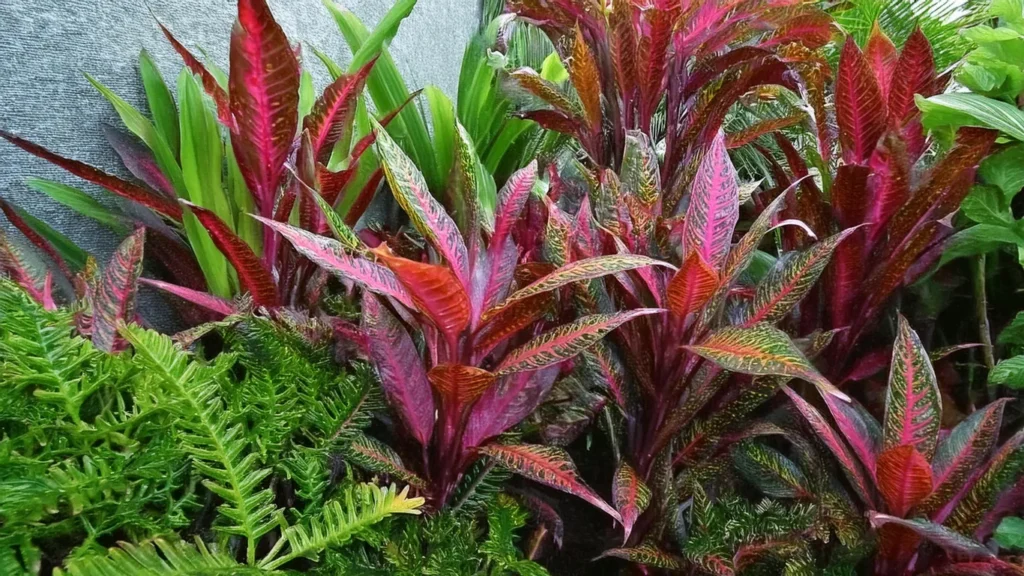
With our guide on Alternanthera Rosaefolia, the stunning aquatic plant that will transform your aquarium into a pink paradise.
With its vibrant hues and captivating appearance, this plant will surely be a standout feature in your aquascape.
This article will explore everything you need to know about caring for Alternanthera Rosaefolia, from its origins and distinctive features to propagation techniques and ideal tankmates.
Let’s dive in and discover the beauty of this pink gem!
Key Takeaway
- Alternanthera Rosaefolia is a stunning aquatic plant that adds a vibrant pop of pink to your aquarium.
- Understanding its appearance, growth habits, and natural habitat will give you a deeper appreciation for this mesmerizing plant.
- Proper care and maintenance, including planting techniques, lighting requirements, and water parameters, are crucial for its healthy growth.
- Learn different propagation techniques to expand your tank’s collection of Alternanthera Rosaefolia.
- Discover the benefits of adding this plant to your aquascape for its biological advantages and aesthetic appeal.
Quick Stats
| Attribute | Details |
| Family Name | Amaranthaceae |
| Origin | South America |
| Height | 20-50 cm (8-20 inches) |
| pH Range | 5.5-7.5 |
| CO2 Requirement | Medium to High |
| Growth Rate | Fast |
| Care Level | Intermediate to Advanced |
| Color Form | Red, Pink |
| Water Conditions | Soft to Moderately Hard |
| Max Size | 30-50 cm (12-20 inches) |
| Lighting | Moderate to High |
| Supplements | Iron, Trace Elements, Potassium, Nitrogen |
| Placement | Midground to Background |
| Propagation | Cuttings, Side Shoots |
Appearance, Color Variations, And Growth Habits
Exploring Alternanthera Rosaefolia’s appearance, color variations, and growth habits can help one gain a deeper understanding of this captivating aquatic plant, which is known for its stunning visual appeal and unique characteristics.
Alternanthera Rosaefolia features elongated, lance-shaped leaves that exhibit beautiful shades of pink and red.
Its vibrant colors add a striking contrast to the greenery typically found in aquariums. The intensity of the pink hues may vary depending on the lighting conditions and nutrient levels in the tank.
Regarding growth habits, Alternanthera Rosaefolia is considered a relatively fast-growing plant.
Under optimal conditions, it can quickly reach a height of 20 inches (50 cm) or more, making it an excellent choice for midground or background positions in your aquascape.
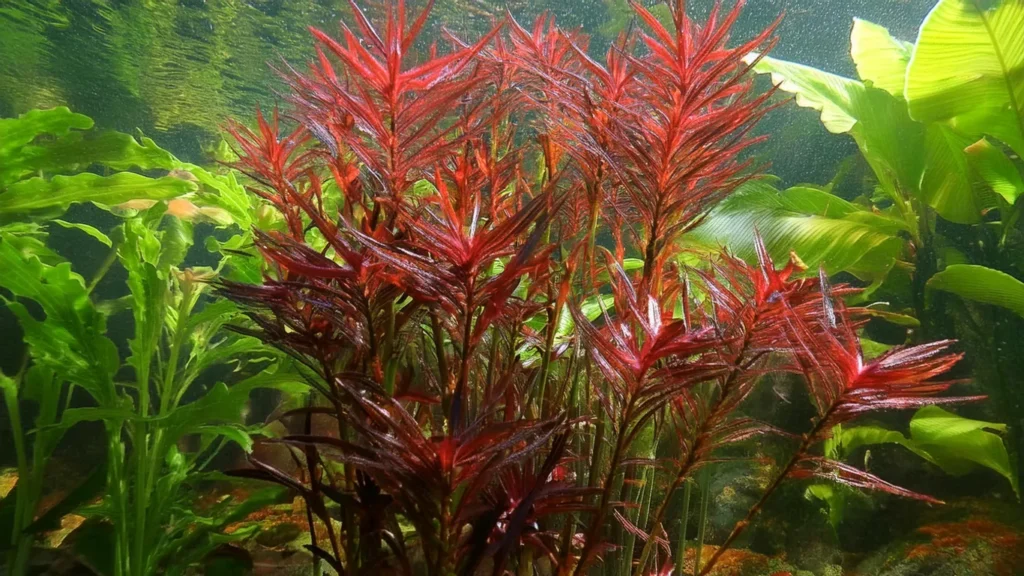
Natural Habitat And Origin
Native to South America, Alternanthera Rosaefolia can be found in various regions, including Brazil, Argentina, and Paraguay. It thrives in the tropical climate of these areas, where it grows along riverbanks and in wetlands.
This aquatic plant is well-adapted to submersed conditions in freshwater environments, making it an ideal choice for aquariums.
Its natural habitat provides insights into the care requirements for cultivating Alternanthera Rosaefolia in a home aquarium setting.
Distinctive Features
- Alternanthera Rosaefolia showcases a range of distinctive features that make it a standout addition to any aquarium. Its unique characteristics set it apart from other aquatic plants, adding visual interest and natural diversity to your aquascape.
- Vibrant pink coloration: One of the most striking features of Alternanthera Rosaefolia is its vibrant pink coloration. Unlike many other aquarium plants, which often have green or variegated leaves, the intense pink hues of Alternanthera Rosaefolia create a bold and eye-catching display in your tank.
- Narrow and lance-shaped leaves: Alternanthera Rosaefolia’s foliage is another distinctive feature of this plant. Its leaves are narrow and lance-shaped, giving it an elegant and graceful appearance. The leaves grow in whorls along the stem, creating a lush and full-bodied plant that adds volume and texture to your aquascape.
- Bushy growth habit: Alternanthera Rosaefolia is known for its bushy growth habit. It can reach heights 10 to 20 inches when properly cared for, making it an ideal choice for midground or background placement in your aquarium. The dense growth of Alternanthera Rosaefolia provides hiding places and shelter for fish and other aquatic life, contributing to a more natural and balanced ecosystem.
- Adaptability to different aquarium conditions: This plant can thrive in a wide range of water parameters, making it suitable for both beginner and experienced aquarists. Whether your tank is low-tech or high-tech, Alternanthera Rosaefolia can flourish and add beauty to any aquatic environment.

Nurturing Alternanthera Rosaefolia In Your Aquarium
Proper care is essential to ensure the health and vitality of Alternanthera Rosaefolia in your aquarium.
Following the recommended planting techniques, substrate preferences, lighting requirements, and maintaining optimal water parameters and temperature can create an ideal environment for this stunning aquatic plant to thrive.
RELATED: Unraveling The Helanthium Vesuvius Spirals Of Aquatic Beauty
Planting Techniques And Substrate Preferences
- When planting Alternanthera Rosaefolia, it’s important to provide a well-prepared substrate. Choose a nutrient-rich substrate that promotes root development and provides a stable base for the plant. This will help establish a strong foundation for growth and ensure long-term health.
- For optimal results, plant Alternanthera Rosaefolia in small groups or individually, carefully separating each stem to prevent overcrowding. This will allow each plant sufficient light and nutrient access, preventing resource competition.
Lighting And CO2 Requirements For Optimal Growth
- Alternanthera Rosaefolia requires moderate to high lighting levels to thrive. Provide it with 8-10 hours of light daily, using full-spectrum LED lights or other suitable aquarium lighting options. This will help promote strong, vibrant growth and maintain the plant’s stunning pink coloration.
- In addition to adequate lighting, CO2 supplementation can greatly benefit Alternanthera Rosaefolia. The addition of CO2 will enhance photosynthesis and promote healthy growth. Ensure CO2 levels are properly monitored and adjusted to meet the plant’s needs.
Water Parameters And Temperature Considerations
- To ensure the health of Alternanthera Rosaefolia, it’s important to maintain stable and appropriate water parameters. Keep the pH level between 6.0 and 7.5 and aim for slightly soft to moderately hard water with a 3-10 dKH hardness range. Additionally, the recommended water temperature for optimal growth is between 72°F and 82°F (22°C – 28°C).
- Regularly monitor and adjust these parameters to provide the most favorable conditions for Alternanthera Rosaefolia’s growth and development.
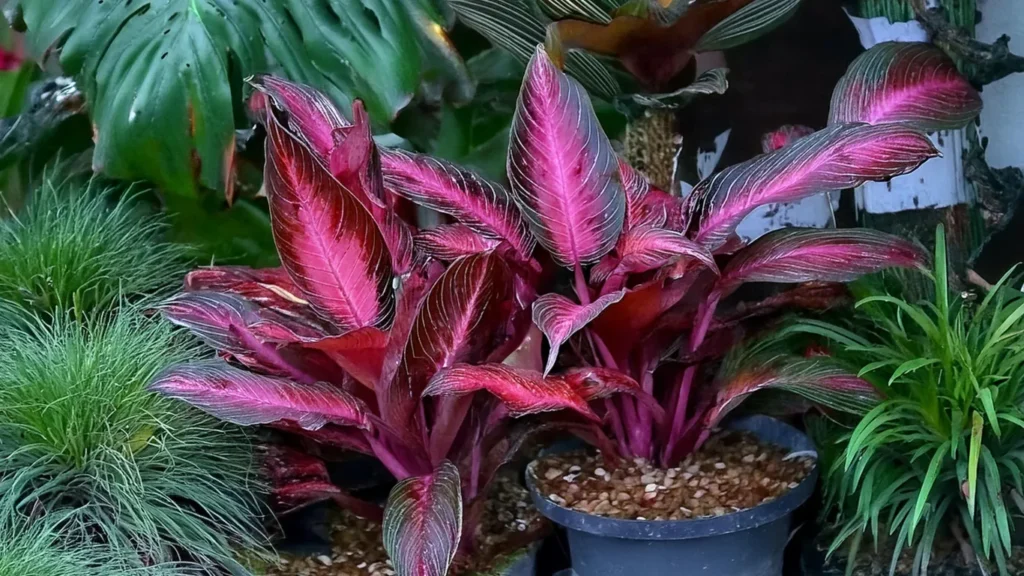
Stem Cutting Method Of Propagating
The stem-cutting method involves taking cuttings from a healthy Alternanthera Rosaefolia plant and allowing them to root in a separate container. To propagate using this method, follow these simple steps:
- Identify a healthy stem with multiple leaves.
- Using a sharp, sterilized pair of scissors, make a diagonal cut just below a node (the point where leaves emerge).
- Remove any leaves from the lower part of the cutting, leaving only a few at the top.
- Plant the cutting in a suitable substrate, ensuring the nodes are partially buried.
- Provide adequate lighting and maintain the appropriate water parameters for optimal growth.
- Over time, the cutting will develop roots and establish itself as a new plant.
Plant Division Method
The plant division method separates a mature Alternanthera Rosaefolia plant into multiple sections, each with its root system. To propagate using this method, follow these steps:
- Remove the plant from its original container.
- Gently divide the plant into several sections, ensuring each has a healthy root system.
- Plant each division in a separate container filled with a suitable substrate.
- Provide adequate lighting and maintain the appropriate water parameters for optimal growth.
- Monitor the divisions closely to ensure successful establishment and growth.
RELATED: Mastering The Art Of Planting Helanthium Tenellum At Your Aquatic Lawn
Emersed Growth Method
The emersed growth method involves transitioning Alternanthera Rosaefolia from an aquatic to a terrestrial environment, allowing it to grow. To propagate using this method, follow these steps:
- Remove a healthy plant from the aquarium or tank.
- Plant the plant with a moist substrate suitable for emersed growth.
- Place the container in an environment with high humidity and adequate lighting.
- Regularly mist the plant with water to maintain humidity levels.
- Monitor the plant closely and adjust care to support healthy emersed growth.
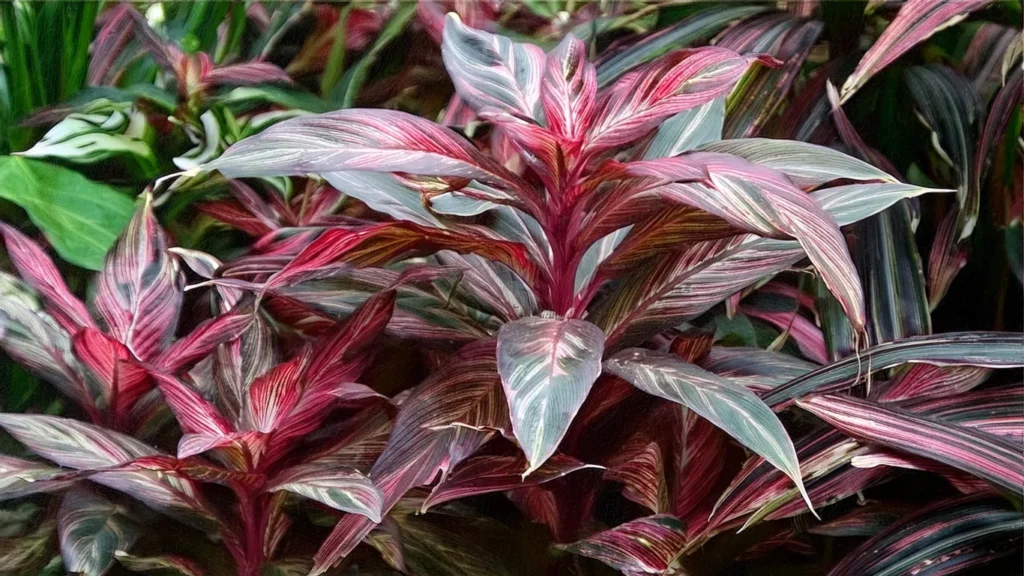
Regular Pruning And Trimming Practices
Regular pruning and trimming are crucial for the overall health and appearance of Alternanthera Rosaefolia.
Removing excess or damaged foliage can promote better air and light circulation, preventing algae growth and other unwanted organisms.
Proper pruning and trimming practices:
- Remove dead or dying leaves by gently cutting them close to the stem using clean, sterile scissors or pruning shears.
- Trim overgrown stems to maintain a desirable shape and prevent overcrowding.
- When trimming, aim to remove no more than one-third of the plant’s foliage at a time to avoid stressing the plant.
Fertilization And Nutrient Supplementation
Proper fertilization and nutrient supplementation are vital for the optimal growth and development of Alternanthera Rosaefolia. These practices ensure that the plant receives essential nutrients that are lacking in the aquarium environment.
When considering fertilization and nutrient supplementation, it is essential to understand the specific requirements of Alternanthera Rosaefolia and the overall nutrient needs of your aquarium ecosystem.
To effectively fertilize and supplement nutrients:
- Choose a high-quality liquid fertilizer that specifically caters to the needs of aquatic plants.
- Follow the dosage instructions provided by the manufacturer, taking into account the size of your aquarium and the needs of your plants.
- Avoid overfertilizing, as this can lead to algae overgrowth and harm the plant’s health.
- Consider supplementing iron, potassium, and micronutrients to ensure optimal growth and vibrant coloration.
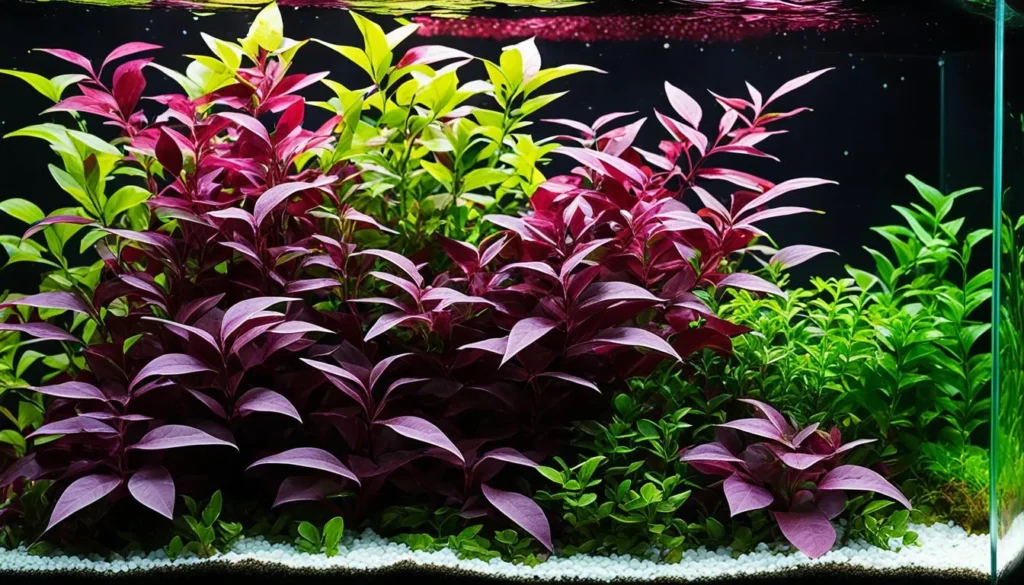
| Pruning and Trimming Practices | Fertilization and Nutrient Supplementation |
| Regularly remove dead or dying leaves | Choose a high-quality liquid fertilizer |
| Trim overgrown stems to maintain shape | Follow dosage instructions provided by the manufacturer |
| Prevent overcrowding and enhance air and light circulation | Avoid overfertilizing to prevent algae overgrowth |
| Consider supplementing necessary nutrients |
Biological And Aesthetic Advantages
- The beauty of Alternanthera Rosaefolia goes beyond its vibrant pink color. This plant has a unique texture that adds depth and visual interest to your aquascape.
- The intricately shaped leaves create a captivating underwater landscape that is a treat for the eyes.
- Its bushy growth habit allows it to fill empty spaces, providing a lush and densely planted environment for your aquatic inhabitants.
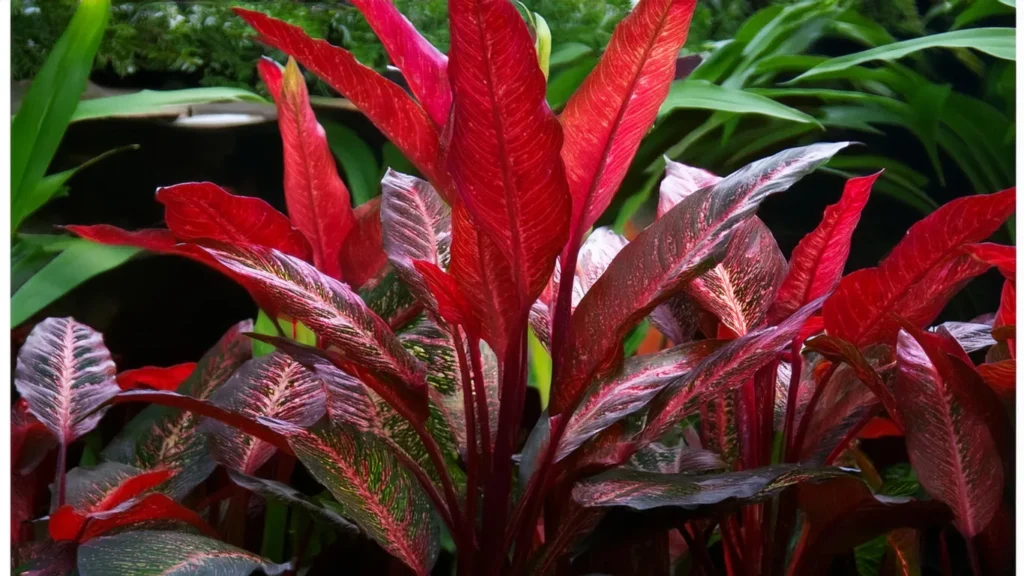
- Not only does Alternanthera Rosaefolia enhance the visual appeal of your aquarium, but it also has important biological advantages.
- This aquatic plant releases oxygen during photosynthesis, improving the overall oxygen levels in the water.
- Adequate oxygenation is crucial for the health and well-being of your fish and other aquatic organisms.
- Introducing Alternanthera Rosaefolia to your aquascape creates a more favorable and balanced environment for your aquatic inhabitants.
Contributions To A Balanced Ecosystem
- When designing an aquarium, it’s essential to consider the balance of the ecosystem. Alternanthera Rosaefolia is vital in promoting a balanced and thriving aquatic environment.
- It helps to control excess nutrients in the water by utilizing them for growth. This process helps prevent harmful algae growth, keeping your aquarium clean and free from unsightly blooms.
- Additionally, the dense foliage of Alternanthera Rosaefolia provides hiding places for shy fish, contributing to their psychological well-being.
- Furthermore, Alternanthera Rosaefolia aids in maintaining stable water chemistry by absorbing nitrates and other harmful substances, reducing the risk of imbalances and water parameter fluctuations.
- This is especially beneficial for hobbyists who strive for a consistent and healthy aquatic environment.
- By incorporating Alternanthera Rosaefolia into your aquascape, you create a harmonious ecosystem that supports the overall well-being of your aquarium inhabitants.
RELATED: Mastering The Art Of Planting Helanthium Tenellum At Your Aquatic Lawn
Choosing Tankmates
When setting up an aquarium with Alternanthera Rosaefolia, it’s important to consider the tankmates that will coexist well with this stunning aquatic plant.
Combining compatible species can create a harmonious environment for your aquatic inhabitants.
This section will explore some compatible species and provide valuable tips for avoiding plant predation.
Compatible Species
Alternanthera Rosaefolia is a versatile plant that can thrive alongside various fish species and invertebrates. Here are some compatible tankmates to consider:
- Tetras: Neon Tetras, Cardinal Tetras
- Gouramis: Dwarf Gouramis, Pearl Gouramis
- Rasboras: Harlequin Rasboras, Galaxy Rasboras
- Livebearers: Guppies, Endler’s Livebearers
- Corydoras Catfish: Bronze Corydoras, Panda Corydoras
- Shrimp: Red Cherry Shrimp, Amano Shrimp
These species are known for their peaceful nature and compatibility with aquatic plants, making them ideal tankmates for Alternanthera Rosaefolia. However, it’s essential to research each species’ specific care requirements and ensure they are compatible regarding water parameters, temperature, and behavior before introducing them to your aquarium.
Tips For Avoiding Plant Predation
While some fish and invertebrates are suitable tankmates for Alternanthera Rosaefolia, it’s important to be cautious of species known to munch on plants. To avoid plant predation and maintain the health and aesthetic appeal of your aquascape, consider the following tips:
- Choose herbivorous or omnivorous species that are less likely to feed on aquatic plants.
- Avoid aggressive or fin-nipping species that may damage the delicate leaves of Alternanthera Rosaefolia.
- Provide ample hiding spots and visual barriers in the aquarium to protect the plants and reduce the likelihood of predation.
- Monitor the tank closely and remove any aggressive or plant-damaging species if necessary.
- Regularly trim and prune Alternanthera Rosaefolia to promote new growth and discourage herbivorous species from targeting older leaves.
Conclusion
Alternanthera Rosaefolia is a remarkable aquatic plant that adds a stunning touch of pink to your aquarium. Its vibrant color variations and unique growth habits make it a standout addition to any aquascape.
Adding Alternanthera Rosaefolia to your aquascape brings numerous benefits. Its captivating color enhances the aesthetic appeal and contributes to a balanced ecosystem by providing shelter and creating a natural habitat for aquatic inhabitants.
Careful selection of compatible tankmates and implementation of strategies to avoid plant predation will ensure a harmonious environment for all your aquatic species.
Frequently Asked Questions
How Can I Ensure The Most Intense Coloration In Alternanthera ‘rosaefolia’?
To achieve intense coloration in Alternanthera ‘Rosaefolia’, provide high-intensity lighting and adequate CO2 supplementation (around 20-30 ppm). The plant’s vibrant colors are a response to strong light, encouraging the production of red and pink pigments.
Iron supplementation is also critical; a regular dose of chelated iron helps enhance the red and pink hues. Additionally, a balanced supply of macronutrients (NPK) and micronutrients supports overall health and color vibrancy.
What Specific Challenges Might I Face When Growing Alternanthera ‘rosaefolia’ In Softer Water, And How Can I Overcome Them?
In softer water, Alternanthera ‘Rosaefolia’ might struggle with nutrient uptake, particularly calcium and magnesium, which are more abundant in harder water. To overcome this, supplement these minerals specifically.
Use a water conditioner that adds essential minerals back into the water or dose calcium and magnesium supplements directly. Monitoring water parameters regularly ensures that the plant receives the necessary nutrients without altering the water hardness excessively.
Can Alternanthera ‘rosaefolia’ Be Propagated From Cuttings, And If So, What Is The Best Technique?
Yes, Alternanthera ‘Rosaefolia’ can be easily propagated from cuttings. The best technique involves cutting a healthy stem at least 10 cm long just above a leaf node. Remove the lower leaves and plant the cutting into the substrate, ensuring that a couple of nodes are buried to encourage root growth.
High light and CO2 will significantly improve the success rate and speed of establishment for the new plants.
How Does Alternanthera ‘rosaefolia’ Respond To Different Photoperiods, And What Is Optimal?
Alternanthera ‘Rosaefolia’ responds to photoperiods in terms of growth rate and color intensity. A longer photoperiod (12-14 hours) can promote faster growth and more vibrant colors, but it also increases the risk of algae if nutrients and CO2 are not balanced accordingly.
An optimal photoperiod is generally around 8-10 hours, providing enough light for growth and color development while minimizing algae risks. Adjust the photoperiod based on your aquarium’s specific conditions and the plant’s response.
What Advanced Strategies Can I Employ To Deal With Stem Rot In Alternanthera ‘rosaefolia’?
Stem rot in Alternanthera ‘Rosaefolia’ can be challenging but is often due to poor substrate conditions or overwatering (in emersed setups). For submerged growth, ensure the substrate is not overly compacted and allows for good water flow around the roots.
In emersed setups, reduce watering to avoid soggy conditions. Improve circulation in both scenarios. If stem rot occurs, trim the affected parts and treat the plant with a fungicide recommended for aquatic plants, being mindful of its impact on the aquarium’s overall ecosystem.
- Unveiling The Wonders Of Riccia Fluitans In Aquascapes - August 7, 2024
- Vallisneria Gigantea Var. Guide To Care And Cultivation At Home - July 31, 2024
- Vesicularia Dubyana Care & Growth Guide Tips For Beginner Gardeners - July 30, 2024
